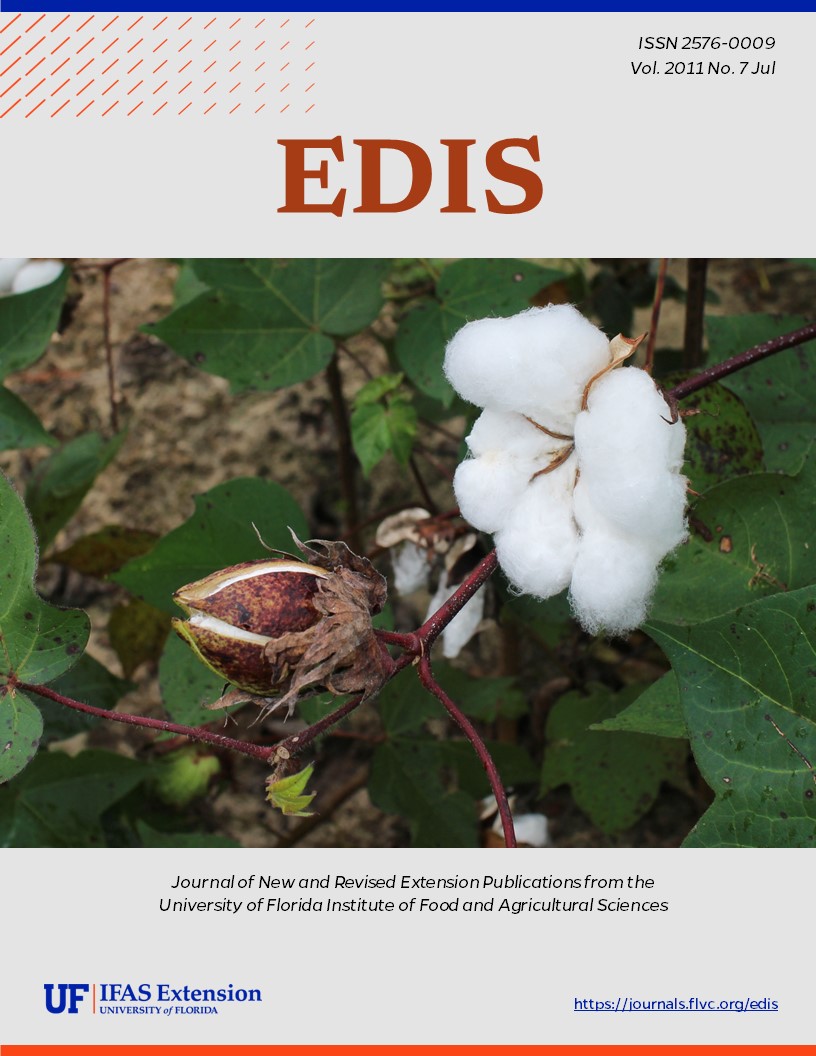Abstract
Elephantgrasses were introduced from Africa to the U.S. in the early 1900s, with dwarf varieties like Mott emerging in the 1940s and 1970s. Mott elephantgrass reaches 5–6 feet in height, making it more manageable than taller types. It boasts high forage quality with 12%–14% crude protein and 65%–70% digestibility when properly fertilized. Despite its benefits, Mott is not widely adopted in Florida due to costly vegetative planting methods. Ideal planting requires mature, well-fertilized stems placed horizontally in furrows during July-August. This document aims at providing detailed guidance on the characteristics, cultivation, and management of Mott dwarf elephantgrass. It serves as a resource for farmers and agricultural practitioners interested in understanding the unique qualities and potential uses of this specific grass variety, particularly in the context of forage production and grazing systems. The document outlines key features, establishment methods, optimal management practices, and recommended fertilization strategies to maximize the productivity and nutritive value of Mott elephantgrass in agricultural settings. First published in June, 2002.

This work is licensed under a Creative Commons Attribution-NonCommercial-NoDerivatives 4.0 International License.
Copyright (c) 2011 UF/IFAS

